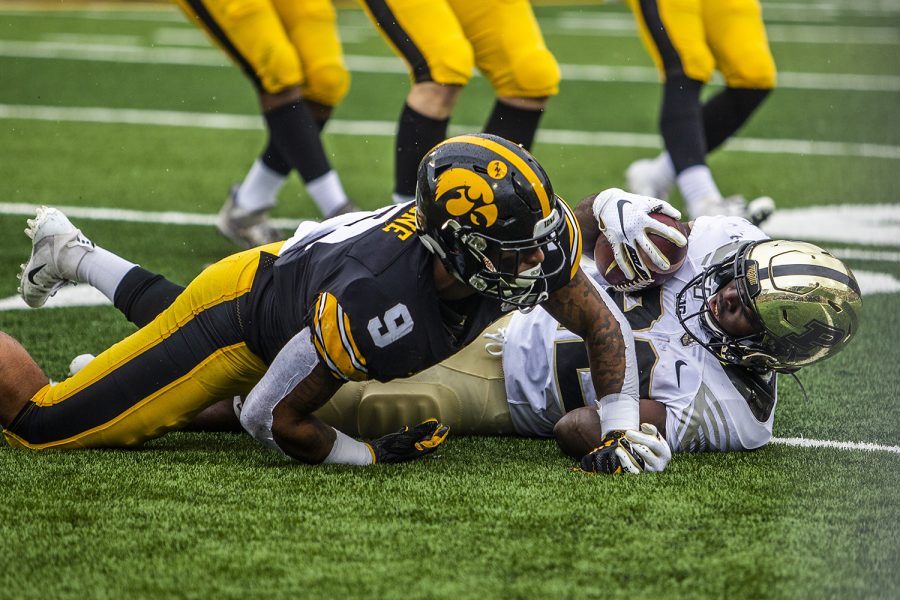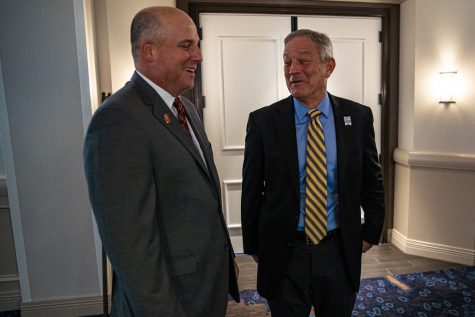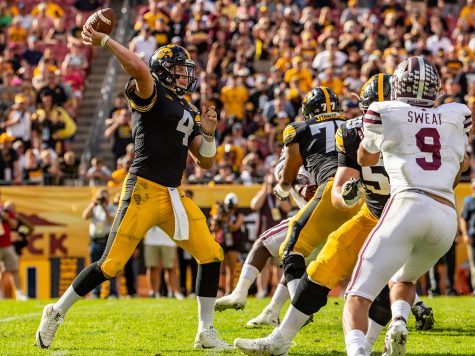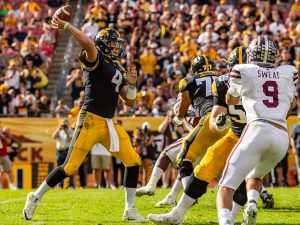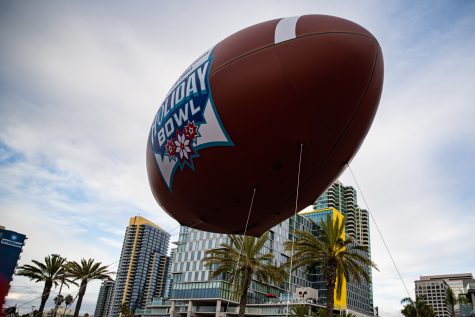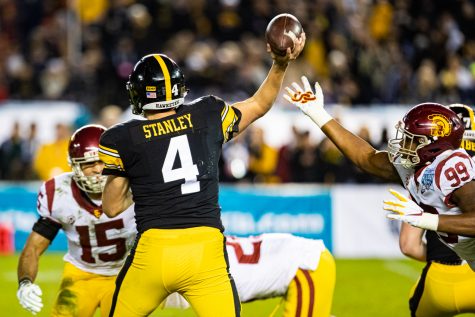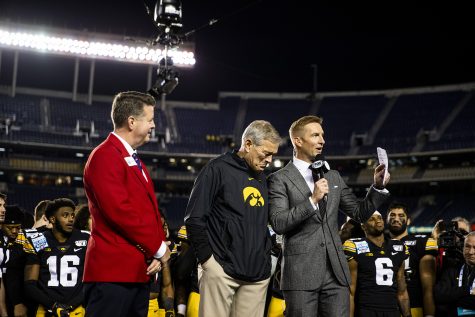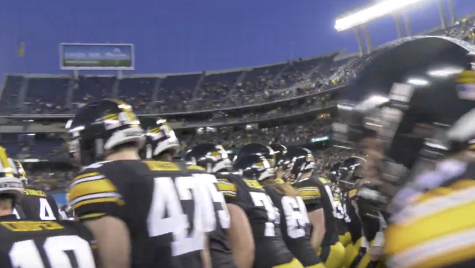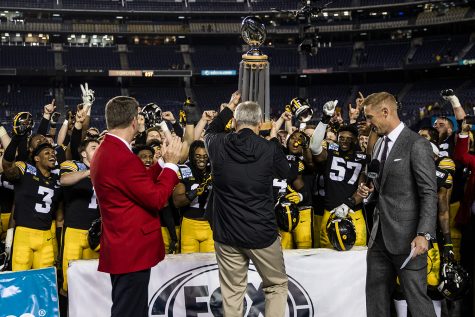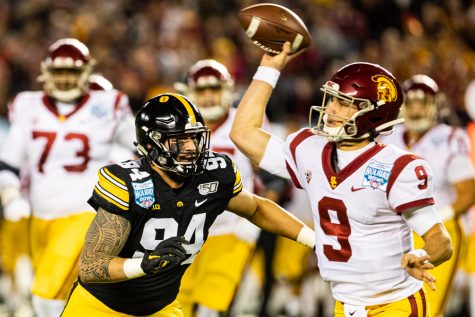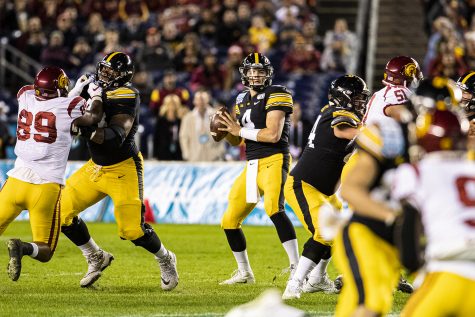USC’s strong air-raid offense to test Iowa secondary
USC’s offense is run by what it can do through the air, and it will be on Iowa’s defense to stop it.
Iowa defensive back Geno Stone attempts to defend Purdue running back King Doerue during the Iowa football game against Purdue at Kinnick Stadium on Saturday, Oct. 19, 2019. The Hawkeyes defeated the Boilermakers 26-20.
December 25, 2019
Even after facing strong receiving corps in Michigan and Minnesota this season, the Iowa secondary’s biggest test will come in the Holiday Bowl on Dec. 27 in San Diego.
Instead of facing one or two well-versed receivers, USC poses a strong threat with at least three.
Michael Pittman Jr. led the team with 1,222 receiving yards this season, averaging 101.8 yards per game. He is followed by Amon-Ra St. Brown and Tyler Vaughns, who both average better than 70.
“[Pittman and St. Brown] pop up on the screen,” Iowa safety Geno Stone said. “[Vaughns] kind of pops up, too. [Drake London] is a little sneakier guy; he gets a bunch of yards. They’re all really good; they’re all special in a certain type of way.”
For Iowa, its win over Minnesota was a steppingstone for this game. However, that wasn’t nearly so tough of an air-raid offense as USC will be.
“I feel like [USC is] more explosive for more big plays,” Stone said.
The Trojans, led by freshman quarterback Kedon Slovis, have averaged almost 90 more passing yards than their opponents this season and more than 200 more yards through the air than the running game.
This season, USC gained 1,000 more yards passing than their opponents.
“On any given play, they can hurt you,” cornerback Michael Ojemudia said. “We’re going to have to be really tight on Friday because we haven’t seen a team like that before.”
The Hawkeye defense has, for the most part, been effective in holding both the running and the passing game. On average, opponents gained 184.17 passing yards per game and 120.1 rushing yards.
The focus now is shifting gears to being more aware of the strong passing threat.
“Usually, [we’re focused on] limiting the run, but now, it’s probably the big plays,” Stone said. “This team is really talented, so they can take it the distance whenever they get the ball. Being able to do our job and being disciplined are going to be big things.”
Despite that, there still needs to be a focus on the line of scrimmage and the run option that USC possesses.
For Iowa’s success in the backfield, the defensive line doing its job is a big part. Pressuring Slovis into throwing at contested receivers or not allowing him the time to do so will be key to helping slow the offense.
Even from that standpoint of stopping the ball near the line instead of through the air, Iowa’s defense, which ranks as one of the best in the nation, is going to be tested.
“The running game for them is probably not as important to them as passing, but I think they’ve got good, skilled guys at the running back, and their offensive line is pretty decent,” defensive coordinator Phil Parker said. “It’s going to be a heck of a challenge for us.”



